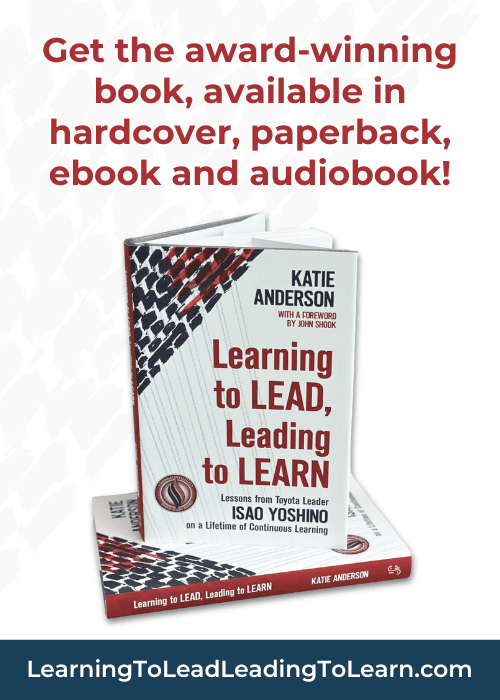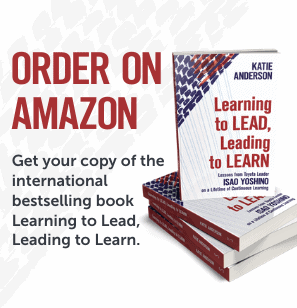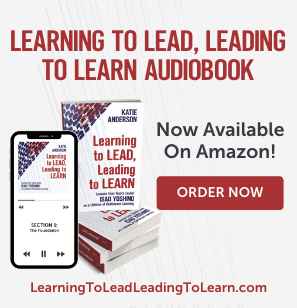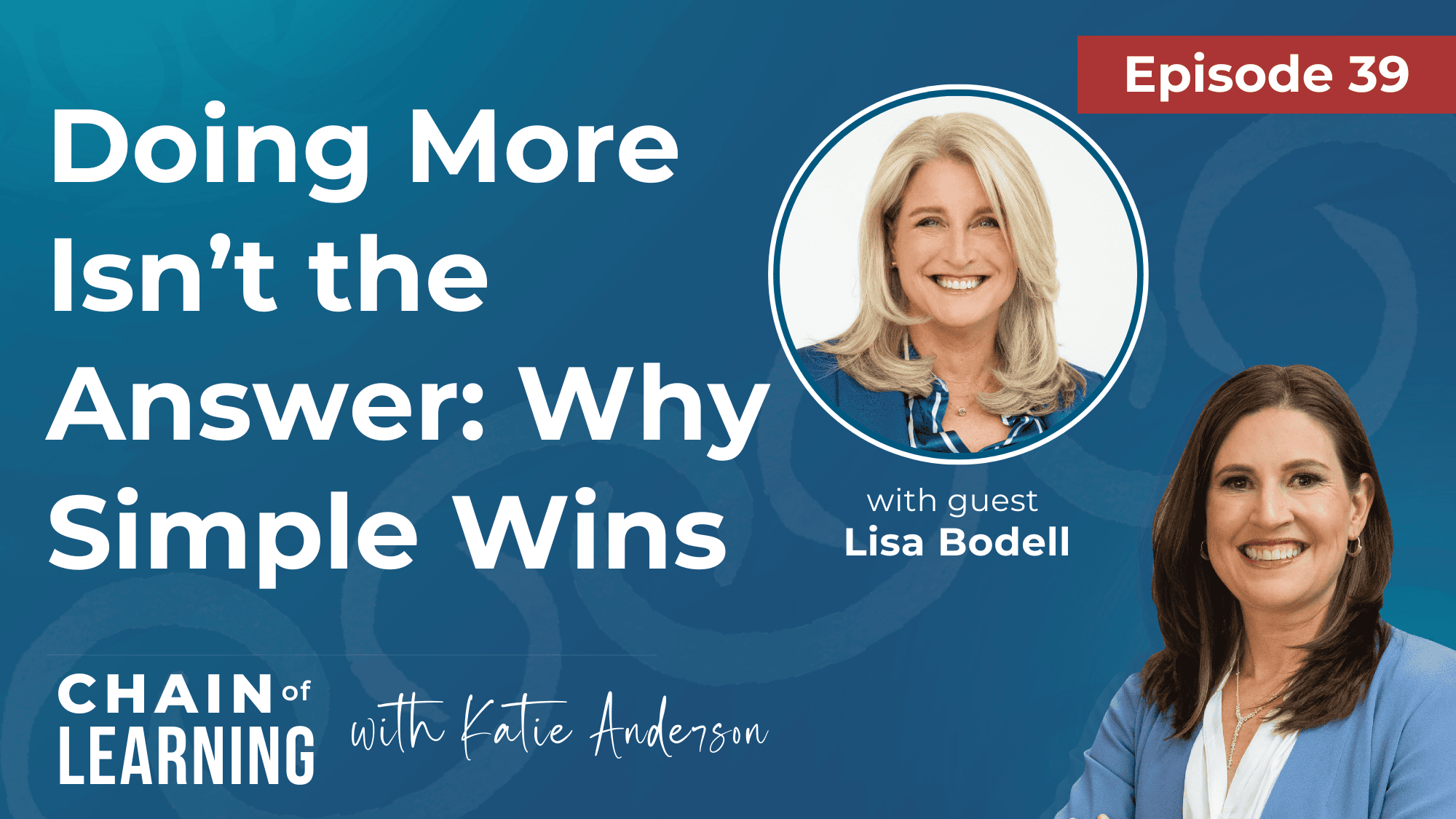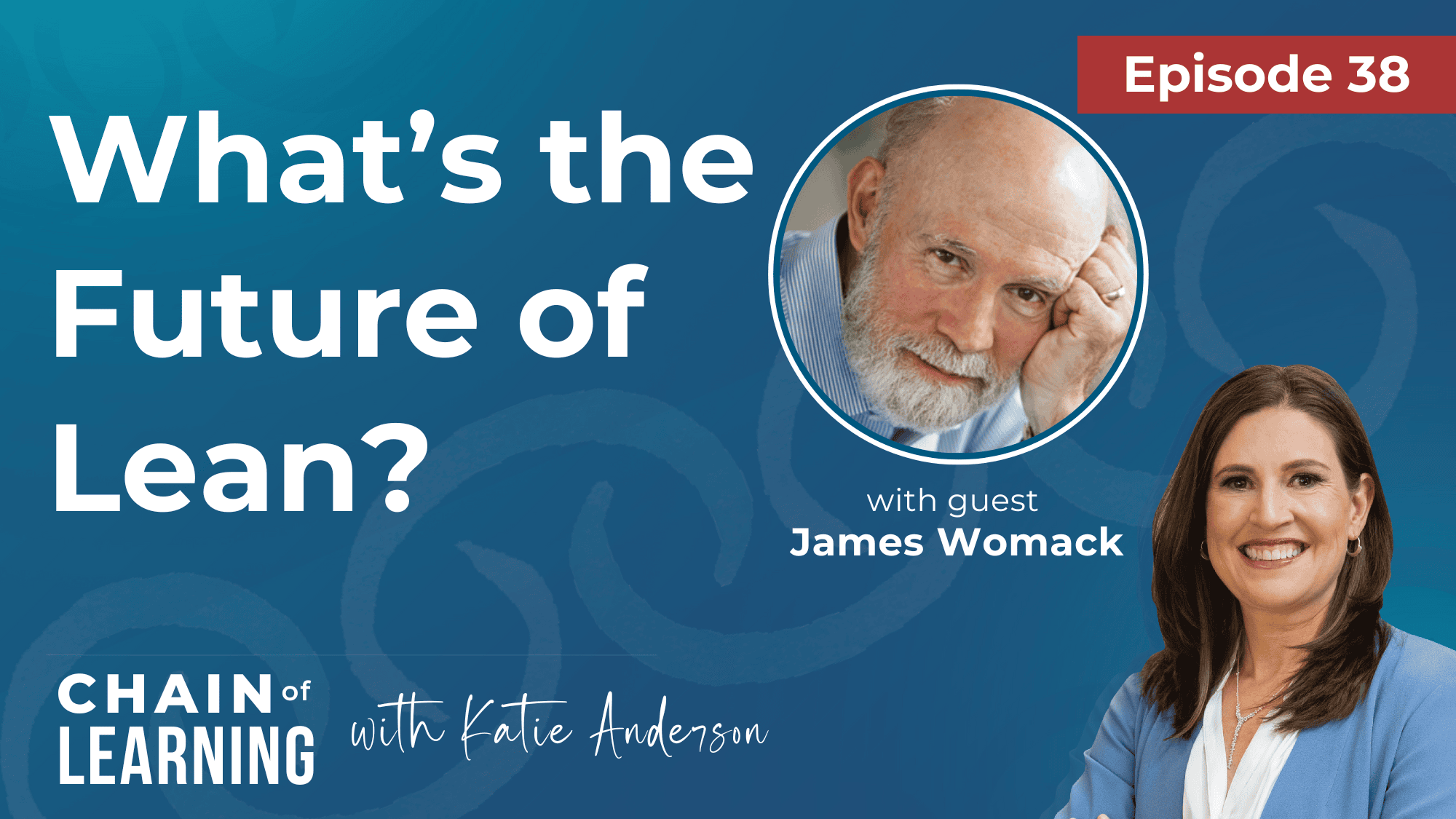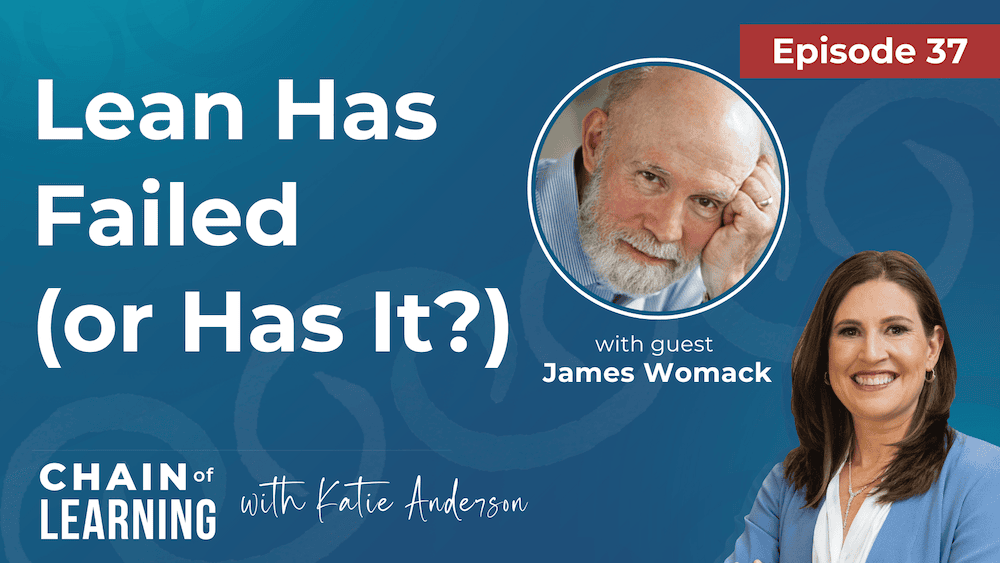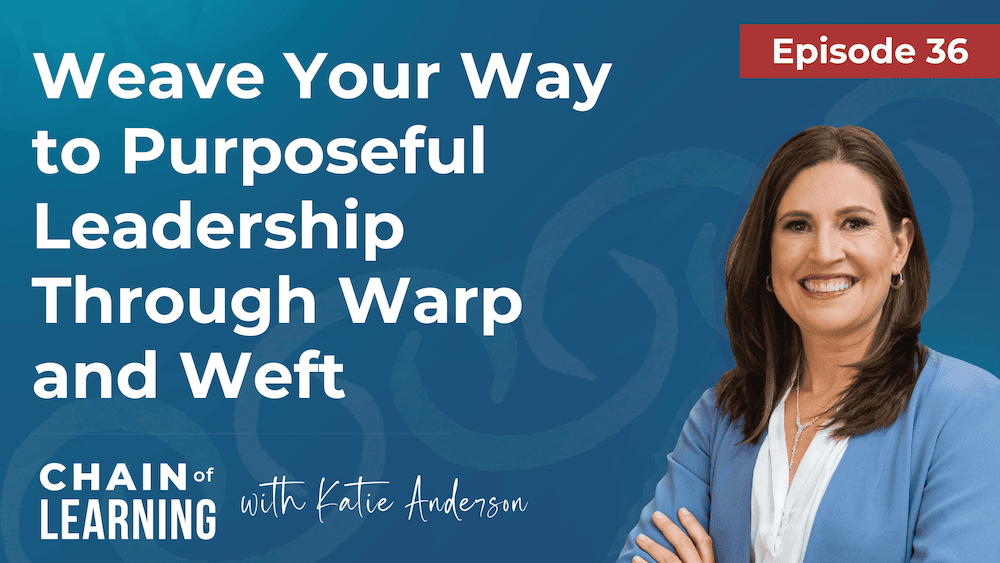How Stories Can Revolutionize Your Leadership Approach
Want to inspire action in your presentations and transform your message from boring to unforgettable?
The secret: it’s not data and facts that create impact — it’s your stories.
As humans, we’re wired to remember and respond to stories because they connect with our emotions and drive our decisions.
Storytelling is more than just a trending term; it’s the fundamental way to connect with your audience on a deeper level and how you actually ignite change.
In this episode, Carol Cox and I explore how to harness storytelling to not just share information, but to truly resonate.
Regardless if you’re a keynote speaker presenting to a large audience or a leader speaking to your team, discover frameworks and insights on how you can turn simple anecdotes into powerful narratives that captivate, motivate, and inspire.
In this episode you’ll learn:
✅ Why our brains are more tuned to stories than facts
✅ The difference between just sharing information and truly motivating action
✅ How to avoid the “expert trap” and connect on a human level
✅ Two practical frameworks to craft compelling stories
✅ Real–life examples of powerful storytelling in action
The Ideal Framework: Crafting Powerful Stories
In our conversation, Carol Cox introduced the IDEAL framework, a powerful tool for leaders who want to harness the impact of storytelling.
IDEAL is an acronym that stands for Imagery, Dialogue, Emotion, Action, and Lesson—each a crucial ingredient in crafting stories that resonate and inspire.
- Imagery: Set the scene for your story. Were you in a boardroom, on a plane, or outdoors? This helps your audience visualize the moment and connect with your narrative.
- Dialogue: Include what was said during the moment—both external conversations and internal self-talk. This dialogue drives the story and adds depth.
- Emotion: Share how you were feeling at that moment. Whether it was anxiety, excitement, or conflict, emotions make your story relatable and impactful.
- Action: Highlight the movement or decisions that drive the story forward. Action keeps the narrative engaging and dynamic.
- Lesson: Convey the insight or takeaway for your audience. This is where the power of your story as a leader truly shines, offering wisdom and inspiration for others.
The IDEAL framework can transform the way you share your experiences, helping you become a more compelling and influential leader.
Listen Now to Chain of Learning!
Whether you’re an executive, operational leader, or coach guiding leaders to success, you won’t want to miss this episode. Tune in now to discover how to transform your leadership and empower your teams to create a culture of excellence.
Watch the conversation
Watch the full conversation between me and Carol Cox on YouTube.

About Carol Cox
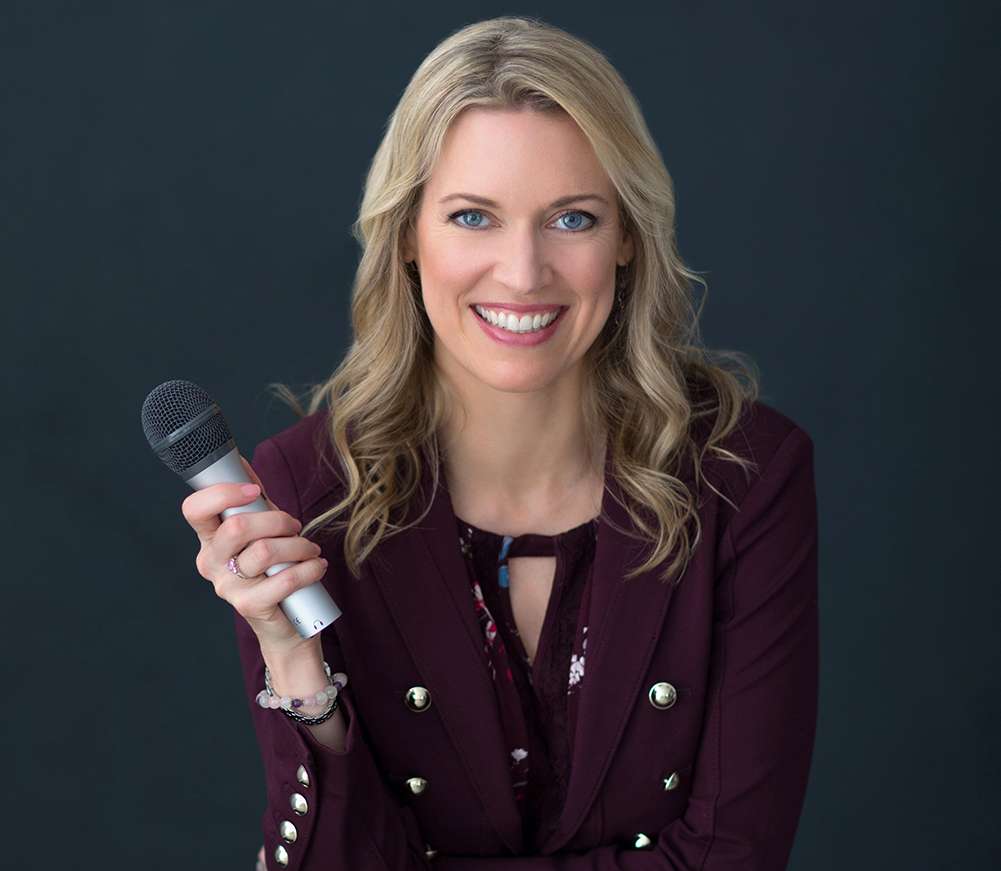 Carol Cox is the founder and CEO of Speaking Your Brand®, a coaching and training company that works with high-performing, purpose-driven women entrepreneurs and professionals to create their signature talks and thought leadership platforms.
Carol Cox is the founder and CEO of Speaking Your Brand®, a coaching and training company that works with high-performing, purpose-driven women entrepreneurs and professionals to create their signature talks and thought leadership platforms.
Carol is host of the weekly 5-star rated Speaking Your Brand® podcast and during election seasons serves as a political analyst on TV news.
Carol was named as one of Orlando’s Women of the Year in 2021 and has been featured in Forbes.
Through her company and content, her mission is to empower more women to find and use their voice, to tell the stories that need to be told, and to activate ideas for change.

 Reflect and Take Action
Reflect and Take Action
Working with Carol Cox has profoundly shaped my understanding of the power of storytelling in leadership. One phrase from our conversation that truly resonated with me was, “As speakers, leaders, or change professionals, we don’t want our audience to just receive information—we want them to experience transformation.”
It’s not just about delivering content; it’s about fostering change through stories.
Reflect on Your Takeaways
As you reflect on this episode, consider these questions:
- What part of this discussion left the most lasting impression on you?
- Which stories or ideas truly resonated and connected with your own experiences?
I invite you to share your top takeaway from this episode on LinkedIn. Let us know how it’s impacted you, and don’t forget to tag both Carol Cox and me.
Build Your Story Repertoire
Reflect on the frameworks Carol discussed and think about how you can start building your own collection of impactful stories. Start with one pivotal moment in your life, a time when you had to make a significant choice, and use the frameworks we discussed to transform it from just an anecdote into a powerful story.
Then, practice sharing it. Refine it. Make it a tool for transformation in your own leadership journey.
Work with Me
If you’re looking for a high energy keynote speaker to inspire your conference audience or leadership retreat participants with engaging stories and actionable takeaways. about how to create a culture of continuous learning, a leader’s role in leading to learn how to break the telling habit or more.
I’d be happy to support you, your organization and your leaders. You can learn more and find ways to work with me here.
Important Links
- Connect with Carol Cox
- Carol Cox’s Website
- Download the KATALYST Self-Assessment
- Get the book “Learning to Lead, Leading to Learn” – available in paperback, hardbound, audiobook, and ebook – LearningToLeadLeadingToLearn.com
- Work with me: KBJAnderson.com
- Follow me on LinkedIn
- Episode 13: 3 Ways to Break the Telling Habit® and Create Greater Impact
- Episode 18: Discover the Real Meaning of Kaizen
- “Speaking Your Brand Podcast” Episode 280: Making the Shift from Expert Presenter to Storyteller in Your Keynotes
- “Speaking Your Brand Podcast” Episode 345: Elevate Your Audience Engagement Skills with These Proven Strategies
Listen and Subscribe Now to Chain of Learning
Listen now on your favorite podcast players such as Apple Podcasts, Spotify, and Audible. You can also listen to the audio of this episode on YouTube.
Timestamps:
00:44 – The importance of storytelling in making a lasting impact for both business and individual leaders
04:48 – How to avoid “expert trap” where leaders rely too heavily on data and information
10:55 – The difference between sharing an anecdote and creating an emotionally compelling story
12:30 – How the “Challenge, Choice, Outcome” framework can help you identify and shape your experiences into stories
12:38 – IDEAL framework to enhance your storytelling and applying it effectively in various settings
30:12 – Categories that can help you identify impactful stories to create your story bank
35:58 – Practical tips to make your presentations more engaging and memorable
Full Episode Transcript
Carol Cox:
And that’s why the challenge choice outcome helps us to narrow down what are good stories. So we are faced with a challenge, something that has presented an obstacle to us and the goal that we want to achieve or something that we want to accomplish. But then we’re faced with a choice. We can go in direction A or direction B.
So you kind of elucidate what that choice is, you make a choice, and then there is an outcome or a consequence for that choice.
Katie Anderson:
Welcome to Chain of Learning. We’re the links of leadership and learning unite. This is your connection for actionable strategies and practices to empower you to build a people centered learning culture, get results and expand your impact so that you and your team can leave a lasting legacy.
I’m your host and fellow learning enthusiast, Katie Anderson. When you think about the most recent presentations you’ve heard, whether it’s from a keynote speaker on an events main stage or in the conference room or video meeting with leaders in your company. What is it that you remember the most? Is it the data and facts that someone shared?
Or is it an experience? A story. I can almost guarantee you that you answered a story. We are wired as humans to respond to and remember stories. Stories connect with our limbic brain, the part responsible for memory, emotions, and behaviors. It’s our limbic brain that drives our motivation and decision making rather than our cognitive brain, which is responsible for knowledge and logical reasoning.
If you want to influence change, persuade people to take action, or simply connect or inspire tapping into your audience’s emotional brain through storytelling is the way that you’ll be more impactful as a leader, speaker, or change professional. Yet in my experience over the past decade as an organizational leadership consultant and keynote speaker, and in previous roles as an internal transformational change leader, far too often leaders and facilitators, including myself get stuck and try to persuade and teach through sharing information, data, and frameworks.
We leave out the stories, our personal connection. The real human why using compelling stories in your communication is how you will evolve from being an expert presenter or facilitator to a transformational speaker or leader. But if you’re like me, you might be wondering, how do you actually create a compelling story?
And how can you incorporate your stories into your communication, whether from the main stage Or in discussions with others. These are exactly the questions I was trying to answer a few years ago when I reached out to Carol Cox to help me uplevel my impact as a speaker and presenter by enhancing my storytelling skills.
And it’s the reason I invited Carol to the podcast today to help you answer these questions too, so that you can make the shift from expert. It’s a transformational leader. Carol Cox is the founder and CEO of speaking your brand, a coaching and training company that works with purpose driven professionals to enhance their thought leadership so that they can tell the stories that need to be told and activate ideas for change.
Carol also uses her speaking skills during election years as a political analyst on TV news. And is the host of the speaking your brand podcast. In this episode of chain of learning, Carol and I explore the power of storytelling, walk through different frameworks that can help you develop and enhance your storytelling skills and share some stories of our own.
As you listen to this episode. Pay attention to what you remember from our conversation. We started off with my question to Carol about what storytelling is and why it’s so important in a business setting for leaders.
Carol Cox:
There’s a lot of different directions that we can go in with this. And we have some frameworks that I know that we’re going to dig into to, uh, to help the listeners when they’re actually sharing stories.
I think what a common misperception is around storytelling in Business specifically is that it feels like it’s the founding story of the business. So every business has a story of, of how they originated. And so a lot of businesses stop there. They’ll have their about page on their website. They put their founding story and they’re like, check, check, check.
We have our storytelling and business. Done. And that’s not quite it really. Storytelling should infuse so much of what a business puts out as far as their marketing and their communications, whether it’s emails they’re sending to their email list, social media posts, podcast interviews that their leadership team is doing, speaking engagements that they’re doing and so on, because it’s through stories.
That we connect with each other as humans that we learn from each other and then can apply those lessons to ourselves. And I think that’s where we really can leverage storytelling not only to help the business and the goals that the business has, but really to create that brand connection. With the audiences that they want to reach.
Katie Anderson:
Yeah. And not just from the organization standpoint, but from the individual leaders standpoint, how do they connect with their teams and create this influence and inspiration? You know, I see so often and I’ve fallen into this trap in, in the past and probably in the, in the current day too, but I’m getting a lot better, but leading with data or being the expert or the information and use and wanting like the information to be persuasive, but that’s like, Connecting with our, with our head.
And it’s really the connection with our heart that often is that like powerful hook. And so how do you see storytelling both, you know, benefiting the business, but also the impact of individual leaders or change leaders?
Carol Cox:
Yes. And if we think about for, for those of you who are leading teams within organizations, so internal communication, and perhaps you also are going out externally on behalf of the organization that you work for and you’re communicating with external stakeholders and audiences.
Think about all the interviews and speaking presentations that you’ve heard. What has been the most memorable things that you have gotten from there? It’s probably the stories that the speakers or the leaders have shared. And we feel like data is what gives us credibility. And certainly there’s a place for data in our presentations.
We have to back up what we’re saying with the data. The evidence with the science, with the analytics and so on, but leading with story brings the audience in and lets them know why this matters to them, why they should care about it. And then they’re going to remember that story. They remember that impact and then they can go back and go and find that date and that evidence to bring it back to whatever, to their organization or to their leadership team.
Katie Anderson:
So true. You know, if I think back to, you know, I’ve been going to a lot of conferences lately and there are some presentations that are, I guess, information. forward. And I, I think this is a natural trap for us to fall in. You call it the expert trap. Like we want to lead with the knowledge and you know, this is certainly as an expert facilitator and you know, someone who was trained in academia, I was taught to lead with the information to lead with the facts, to lead with the frameworks and actually, as you acknowledge, it’s really important to like supplement.
It’s that story that gets us that emotional hook first.
Carol Cox:
Yeah. And if we think about, especially in this day and age where we literally have information Any information that we want at our fingertips. We’ve had that through Google search for the past two decades. Now we have it with AI chat box, like touchy BT, like we are drowning in information and as, and as audiences, as listeners, we need to have all the information we can get.
What we’re lacking, what we need is the transformation. And that’s where the expert trap comes in is that we have, again, we’re schooled, we are brought up in our careers. That information is our credibility. That’s, that’s the, our calling card, but it’s the transformation. I think that’s so many people that we’re, that we’re hungry for.
We want to understand ourselves better as humans, as leaders, as participants in organizations. And we understand ourselves better. Through transformation, through learning from others experiences, their hard won life lessons. I know, Katie, you have stories about those hard won life lessons. That’s how we learn from each other.
We don’t learn from information overload.
Katie Anderson:
And figuring out how to tell those stories can be really hard on a few different levels. One is just feeling vulnerable and like, wow, I’m going to share something. And, you know, maybe feeling like, is this experience even worth sharing? Or I don’t want to seem, you know, I don’t want to toot my own horn or I don’t know if this is an important story.
You know, in getting over that hurdle, but it really humanizes, you know, leaders. I just think it’s one of those things of like level setting up in organizations to that. If you’re the speaker on the stage or you’re the leader in a, you know, with a, on the org chart has a higher position by being able to have that vulnerability kind of, it makes us on a more even playing field as well.
Carol Cox:
Yeah, and I and I think into your point, vulnerability is not always easy, especially in corporate or professional environments because we want to seem like we have everything together. Of course we do. We want you want to be seen as that competent leader. We want to get promoted. We want to advance in our careers, and we all fall victim to this and myself included, even as an entrepreneur, even someone who wasn’t brought up in corporate.
So I’ve been doing my podcast speaking your brand for over seven years, right? And it wasn’t until about three and a half years into the podcast that I decided to get more vulnerable with my own storytelling and my own episodes that I was doing. And I had the same concerns that we all do. What are people going to think of me?
Are they going to think I’m not confident to be a speaking coach because I share things about. Speaking engagements I had that did not go well, that I totally bombed. And they’re like, well, who wouldn’t want to hire a coach who’s had a bad speaking engagement? But what I heard from listeners and from clients was, Harold, thank you so much for sharing those stories, because now we know you’re not perfect.
Not that I thought I was perfect, but that’s how I came across, right? It’s now we know you’re not perfect, so when we come to you and share our fears, our concern, our bad speaking engagements, we know that you understand. Where we’re coming from, because you’ve had those experiences, too. And that was a huge moment for me to understand that’s the power of vulnerability.
Katie Anderson:
So true. Spot on. I found that the more I’ve shared my own challenges of, you know, what I call like break the telling habit of being this, you know, great, enthusiastic, you know, change leader with all the answers to, Oh my gosh, I really need to ask more questions. People identify with that. Yeah. And so I knew like for me that that was a really key story.
But when I came to you over two and a half years ago, I didn’t know how to tell the story. So like I was willing to be vulnerable, knew the story, the power of storytelling, especially through the impact of my book. And I had to beat out the academic writing that I’d been trained on to write my book, Learning to Lead, Leading to Learn, and all the stories that come in there.
But You know, I was stuck in this like anecdote mode of like, I go, I could tell things, but like, how do you do that in an engaging way? So what’s this difference between anecdote and like story? And how can we get out of this anecdote trap as well?
Carol Cox:
Okay, so what I just told you all was basically an antidote or a very broad brush.
So I mentioned I’ve had these speaking engagements that I bombed or that did not go well. So there’s no detail, right? You’re not immersed in that experience with me. You kind of get a high level, okay, this was what happened. So a story is your, it’s almost like you’re filming a scene in a movie. So you’re setting the stage of that moment in time.
So if I say to you now. So I was set to deliver this TEDx talk and I was so excited about it. I had written it out, I had practiced it, I knew the entire eight minutes of it word for word. I get to the venue and all of a sudden, like, my body feels so weird. It’s clammy, you know, I’m just not feeling well. I get up to present and all of a sudden I cannot speak anymore.
And I go through this whole thing. I’m not going to do the whole story. But you see the difference, like all of a sudden you’re there and you feel it with me.
Katie Anderson:
And you helped me so much in being able to start, and I’m still on the journey, get better at framing some stories. In a real storytelling way that was, that has more of that emotional connection rather than me, like telling what just happened or like, almost like, yeah, I had that experience too, which, which is great.
And you know, the, it’s a step forward, but really that emotional connection. So maybe we’ll dive in first to some of the frameworks that I found personally helpful that you’ve shared with me. And then we can explore sort of how the, for the difference for me too, of how, of how that helped me transform my.
Speaking and storytelling on how it can also help listeners as well. So that was a great example. You just shared. Okay, fantastic. Let’s do it. All right. So the first one that was really helpful for me was, you know, thinking about the challenge choice and outcome. So to bring in this choice in this dilemma.
You know, situation that’s that aha moment. It really helps people connect to what that critical change had to be. Uh, so maybe you could explain a little bit more about that framework.
Carol Cox:
Yeah. So challenge choice and outcome is really helpful for number one, helping you to determine which are good stories to share.
So we all have stories that happen to us every single day, but they’re not, no, don’t necessarily make great stories to share with audiences. And that’s why the challenge choice outcome helps us to narrow down what are good stories. So we are faced with a challenge, something that has presented an obstacle to us and the goal that we want to achieve or something that we want to accomplish.
But then we’re faced with a choice. We can go in direction A or direction B. So you kind of elucidate what that choice is. You make a choice and then there is an outcome or a consequence for that choice. The key is that that choice illuminates something about you as the person. Your values, how you see the world.
Maybe you have a paradigm shift or an aha moment. Maybe the choice is one that you would still make today. Maybe the choice is one that you wished you had made differently at the time. And what are the lessons that you learned? from that. So that’s the challenge, choice and outcome.
Katie Anderson:
You have a great example about how you were working on a really important talk for you of your own and how one of your partners and coaches helped you realize that you weren’t really highlighting that, that choice.
And so how did that framework help you? Yeah. Make your talk so much more impactful.
Carol Cox:
Yeah, well, first it shows that we all need coaches. Even coaches need coaches because we’re too close to our own stuff, right? We can’t see the forest for the trees. So I was working with her. This was an online summit that I was doing in the midst of the pandemic.
And so I was the opening speaker for the summit. And so I was working on this, on this talk and this story. And she kept pushing me like, Carol, like, You need to find that moment in time. This is professional situation that I was in. This was back a long time ago. And, and so she’s like, okay, so yes, this ended up happening to you, but where was that moment where you had to make a choice of what to do?
And so then we drilled down to the resistance, meaning that I had to chair and these people who had been my supporters were now bullying me. And it was this awful situation. And all of a sudden I realized. Oh, the choice that I made was to basically resign and back down, not to stand up to them. Now, that’s not the choice I wished I had made or what I would make today, but that is the choice I made then.
And then I drew the connection that 10 years later, I started my current company, Speaking Your Brand, subconsciously to provide that support and community that I didn’t have at the time that I, that I so needed in order to make that better choice.
I love that. And you know, it goes back to some of like business origin stories too, that there’s like a reason we all, the businesses in business, there’s a reason we’ve chosen the professions that we’re in and being able to share that is, is so powerful and, and helps connect people to, to your why and your purpose.
as well. So that challenge choice outcome award or the decision point and some reflections on that, like was that decision when you wish you’d made and the lessons learned can also be a powerful part of the teaching that you do from that story as well.
Carol Cox:
Yeah. And can you, let me just say one. So I think this is also where if you think about the challenge choice outcome and drawing the lessons for the audience, this is where the story then doesn’t feel self indulgent.
Cause I know a lot of times I hear from clients like, well, Who wants to hear my story? Isn’t it just all about me? Why does it matter? What is audience? But yes, it’s about you, but you’re drawing the lesson in the experience, um, in service of the audience. So your storytelling should always be in service of the audience, even though it’s about you.
Katie Anderson:
A key phrase that was really helpful that you brought To me as well is that you might not have had this exact same experience, but it’s likely you’ve had a similar situation in which you had to make a choice or that you were challenged in this way, or, you know, so it may not be the exact same thing.
But if you experienced a feeling like this or a situation like this, and that’s a nice way to make that connection for people as well. When talking about crafting stories too, and this is really helpful for moving from so the anecdote to like that, you know, you’re giving an example of the more emotionally connected story.
What are some ways or elements that people can bring in when reflecting on how to create that story?
Carol Cox:
I have the IDEAL story ingredients. So IDEAL is an acronym. We love acronyms at Speaking Your Bread. We always come up with something. So IDEAL is again, it’s like that scene in a movie. So imagery, where were you?
Were you in a boardroom? Were you on a plane? Were you outside? So it’s, you know, set the stage for us. D is for dialogue. So often we forget in our storytelling, what was, who was saying what? What was going on? What were you saying to the other person? What was that self talk going on in your own head? So, dialogue, emotion, how are you feeling, action, so something has to be happening in the story.
And then L is for that lesson. What is that lesson you’re drawing for the audience?
Katie Anderson:
Can be overwhelming like I was like when you shared this with me I’m like I don’t know like where do I even start I had this moment and one thing that was helpful you said okay what is like I know this was a situation that you discovered over time but was there like one situation where you had like a big aha and we You worked with me over a few different calls to really deconstruct this experience and then reconstruct a narrative story.
And I was just blown away by having, you know, that partnership of, of, and I was learning as I was totally the novice in this storytelling, but, you know, you can hear me tell the full story, uh, in my episode about breaking the telling habit, but, you know, I, I had the situation, which I realized that, Oh my God, I was not.
The question asker, the great coach or leader that I thought I was and here I was and my coach gave me some really hard feedback to hear But you helped me create this through imagery like we created this whole like I was out You know the Serengeti with like zebras and lions And, you know, the gazelle all at a, at a watering hole out of nowhere, rawr, comes the lion, you know, attacking everyone and, and just, you know, shuts the thing down.
And, you know, my, my coach is in the background, kind of like the, you know, national geographic, uh, recorder. And. Those elements, you know, and then we brought in some dialogue about me having some a debrief with my coach and like this aha moment that I had and like, Oh, my God. And then the choice I had to make.
But that was such a different way for me to share a story. It felt very uncomfortable, not because of the vulnerability aspect, but because this was truly storytelling. But it was learning something new. And over time and practice, I’ve really gotten, you know, now it’s like my back pocket. I can whip that story out in either a longer story version or a shorter story version.
And the amazing thing is. People come up to me all after, no matter what keynote stage I’m on or what country I’m in, people come up and say, Oh, I was the lion too. Or I am the lion too. And that connection, it’s like, you can see this human connection and relationship. And it’s, it’s very encouraging for me because I realize how.
powerful story. I mean, I knew intellectually the power of stories, but me stepping into getting better at storytelling has created more impactful keynotes. I’ve actually brought the story into the workshops that I do now. And it actually, I think it frames up the teaching that we want to do even more, uh, more effectively.
Impactfully. So if you want to go back and listen to that episode, I talk about it and break that telling habit. I’ll put the links in the show notes.
Carol Cox:
Yeah. And Katie, I remember when you came to our in person speaking retreat, this was back in April of 2022. And you know, we had all of you participants practice on the stage with the material that you were working on.
I think, I don’t know, that’s when I had come up with this idea of the National Geographic. And then, and, and I encouraged you to kind of act it out on the stage, right? Like you’re, and if you are watching the video clip, you can, you can see us. So. So like, you know, have you like kind of crouch down over on the side of the stage and then like, you know, be the lion and then have the, your coach being like the natural and actually doing the gestures and acting it out.
And I know that felt very different for you. And I was so grateful that you were willing to try it and to go with it. And now that you’ve been doing it and getting much more comfortable about, like you said, people remember that. Because you’ve provided them not with information, but with transformation.
That is the difference. And so now they’re gonna remember that the lion and they can go back and find the science of it or the evidence of, you know, why the, why these things are important. But they’re gonna carry that with, with them. And that’s the impact of storytelling. Like you’re doing it
Katie Anderson:
and you know, I literally sit on my hands and you know that acting out and.
I actually thought I had to like kind of release from my like expert on the stage, you know, speaking and lean into the fun, which felt very awkward at the beginning. But again, with everything, with practice, with coaching, you get better. And, and you had a chance to see me do this in person recently, Carol.
Uh, I was at the Shingo Institute summit in May of 2024 to accept the Shingo Publication Award for my book. And Carol was my plus one and came and saw my keynote, which was so fun to have my coach in the audience.
Carol Cox:
It was so good, Katie. And I, you know, it’s not very often I get to see my clients speak in person because they’re from all over the country and all over the world.
So it was so fun to have, to have you here in Orlando, where I live and to be able to attend and to see you in action because, and to sit in the audience, not only to see you, but to feel you. Observe the audience and how they were interpreting and resonating with you on the stage and I could see like you could feel that the energy of the room, especially when you got into the storytelling, it’s almost like people lean in more to listen to the stories.
It’s like watching a movie or watching a TV show. You become really engaged and immersed in that storytelling and seeing you use the stage and act out parts of the story. And of course have. The tangible parts about your framework and the different things that they can learn from it. It showed me, I guess, very tangibly how much storytelling really is the heart of powerful communication.
Katie Anderson:
It was so fun to have you in the audience. And I, I threw in some other, you know, storytelling is the power of the communication. And I, you know, I I’ve, I’ve gotten. Better at telling more stories and even than just having fun on the stage. I had a divos of hat that my my kid had made for me and came out on the stage doing with it, which you can hear me tell that story in the real meaning of Kaizen episode, but you know, so listeners might be thinking, Okay, that’s all well and good if you’re speaking on a keynote stage or giving like a like a formal talk or presentation and use it bringing in storytelling.
But how can leaders and change leaders be using storytelling, maybe not in the same acting it out kind of way, but still having that emotional connection when they’re in, you know, team meetings or a board meeting or giving an internal presentation or trying to influence and persuade people.
Carol Cox:
Recently on my, my podcast, I did a series around executive Speaking specifically about this.
So not only on those external speaking from the stage, but around internal communication. And I think what a lot of times we miss because we’re so wrapped up into the, in the agenda and kind of checking things off the list and making sure we’re passing along information to our team members is that we forget that we also have to be persuasive.
We have to get buy in from our team members, especially when it comes to anything that’s. Change related because, you know, humans, we do not like change. So in order to do that, we have to empathize with whoever the audience is or team members. And to do that, we have to understand what it is that they want.
What are their goals? What are the challenges that they’re facing? Like external challenges, but also internal, say, mindset or, or skill based, uh, challenges. And then we can use a story so that they understand that we, as the leader, Empathize and have been in their shoes so you could say something like, okay, like team, you know, we have this new initiative that the company, you know, we want to achieve X Y Z.
Now I know as a team, we want to make sure you know that we’re accomplishing this and I know we’ve been faced with a lot of challenges like, you know, we’ve had, you know, these extra projects that we have to do and so on. I remember there was a time early on in my career where something similar was going on.
And then you share a little bit of a story. Okay. to your team. It can be short. It can be just a minute long. It be a 10 minute story. But all of a sudden your team’s like, Oh yeah, like this leader, this person I look up to, they’ve been in my shoes.
Katie Anderson:
So it almost sounds like that type of storytelling. You know, it’s more, maybe it’s an enhanced anecdote where you’re bringing in a little bit more of the dialogue or your emotion into it.
Not like this thing happened, but you’re not necessarily, you know, wildly acting out the Serengeti and the lion attacking people. Or maybe you are, but you know, there’s different. Times and places to be more animated, but it’s about how you can create that emotional human connection. And I, I think maybe that, that choice moment or that emotional challenge is, is the part that really is the hook in those types of situations.
Exactly. Yes. It’s not always that vulnerability is about sharing the challenges in the failures, not necessarily, and people want to hear about successes too, but it’s, you just be tooting your own horn. It’s really like, what were the challenges that got to the success? Because we all know that, like my Daruma say, it’s about falling down seven times, getting up eight.
It’s very rare that you just. Success out of nowhere. Um, and so people want that human, but the failure stories and the learning your way forward.
Carol Cox:
And failure is human and the lessons are human. And you know, of all, you know, we work with clients and I work with clients, you know, every single week when they’re sharing with me.
Things that have happened to them and in their corporate environments or as entrepreneurs. And a lot of times they’re, they’re just telling me one on one or in our small group calls, and they get very teary and emotional about it. And, and they feel bad about it. And I’m like, no, no, this is, this is the container.
This is the place to do this because It’s like, it’s hard to be a human a lot of the times. And we need to have these places where we can go to, where we can feel safe with our storytelling, work out some of those details, and then go and be able to present that to whoever the audience happens to be.
Katie Anderson:
And it doesn’t have to be a big trauma that necessarily happened to me.
It could be, if that’s, you’re feeling like that’s appropriate for you to share. But, you know, so that’s one of the challenges I had. I’m like, I don’t know if I got this, It doesn’t feel that significant, but it actually was a huge turning point and is my Genesis story, the story of the lion about why I’m passionate about what I do, there is that.
So it doesn’t always have to feel like it was this like massive, terrible thing, but it could be this sort of micro mini crisis that was transformational for yourself and then the impact from there.
Carol Cox:
Yeah, exactly. Like those speaking engagements that didn’t go well. Like again, that’s not traumatic. It’s something that I learned from and I want to share with audiences that they can learn from it too.
Katie Anderson:
Yeah. And you know, speaking of failure, I mean, the most feedback I get from my book, learning to lead, leading to learn is all the stories of failure that Mr. Yoshino was willing to share in the book and the reflections on that. So, you know, like thinking about that, that, that challenge choice reward or challenge choice lesson that was part of the, the storytelling we had in the book as well.
So it can be written communication. It can be speaking communication, but how do you bring that emotional connection? How can leaders and change leaders get started in creating their repertoire, either of those smaller stories, maybe to share internally or the bigger stories that might be fitting for a broader presentation on stage.
Carol Cox:
Well, the first thing is to think about some stories for your story bank. So think about those challenge, choice, outcome type of stories. And here are some different categories that they could fall into. So one of them could be something regarding growing up, you know, your childhood growing up. Was there something that happened that impacted you?
It doesn’t have to be big T trauma or even little T trauma, just something about, you know, maybe something about your family. Or just your personality as a child. So think about that. Another category is compelled to take action. So something that happened to you, if like, okay, I have to write this wrong or I have to do something about this could be a paradigm shift, like you, Katie, with the break, the telling habit and that experience you had with your coach, so this shift in understanding how you see the world and how you interact with it, it could be something related to your business origin story.
It could be a crisis of confidence. So something that happened to you that did kind of set you back for a little while, maybe set you back for months or even a couple years in your career. And then how did you overcome that or what did it look like on the other side? So those are some categories to start thinking about for your story bank.
Katie Anderson:
And then from the story bank, you know, so you generate a list. And sometimes that can be Hard to just do solo. I’m, I’m an external processor. So like having a coach or someone to just, you know, or even a friend just like, Hey, let me just like talk out some of those situations could be helpful to just thinking I get stuck, you know, just like staring at the page as well.
So then, okay. So you have a story bank and then like, let’s choose one, like how to get started with that and where, and how to go from like this idea to practicing your way towards better.
Carol Cox:
Yeah, for the storytelling. So if we think about say, like, maybe it’s a compelled to take action. So something happened.
And again, it could have something even in your personal life, not necessarily in the work environment, but it impacted you in a way that you thought like, you know, I want, I want to kind of make this cause known, or I want to do something on behalf and create some type of positive change. So think about that one moment in time.
So what was that day? Where were you? What were you doing? And you kind of want to dramatize it, you know, in the old lifetime movies are like, this is a dramatization of a real event. So you really kind of want to dramatize it like Katie did with the, the national geographic Serengeti moment, dramatize it, find that moment in time that, that got you to take action.
And then what did you do? So again, like you had that challenge. You made a choice. You made a choice to maybe enact some positive change, do something about it. And then what was the outcome? And then now, like, you’re, that great transition sentence that you shared earlier, Katie, you can say something like, so you may not have had this exact situation that I just had, but have you ever had a time that you felt compelled to take action, compelled to do something that, you know, to, to make, to have greater awareness or to shine greater awareness on a particular cause or situation?
Katie Anderson:
And I would add to, so that’s a super great suggestions to get started is to not, and this is reflecting on my own learning journey, just like with everything, we can’t become experts or you know, competent just out of the gates. It takes that practice. So just start. Saying, telling your story, get feedback, maybe not in the moment that you feel like is the, you know, the critical moment to be shining.
So, you know, like if you’re giving a talk, practice a lot in, in advance and pull in people and hear how it’s resonating or just start trying out sharing your story with people at work and see how that goes in a meeting or like how they respond and how that changes from moving from the expert leading with all your data and information to introducing a little bit of storytelling.
A little bit of storytelling and how that connects and shifts, uh, the conversation. So don’t worry about being perfect. Just keep working at getting better and bringing in those stories in, in everyday conversation.
Carol Cox:
And, and just, and just trust that it is of benefit to the, the people who are listening to it.
And again, it, it’s not, I understand it like you feel like whatever you’re sharing is not about you and all that, but it in a sense it is because you you’re sharing something that matters to you. I think about we do some work with the University of California, their faculty members to help them create test style talk.
So 10 minute talks related to their academic research and like most. Good academics. They are very resistant to having any type of personal stories within their talks. And we tell them like, this is the place for it. We, this is why you’re doing this talk is precisely because we want you to share with your personal connection to your topic.
And these are topics like cement versus concrete. I’m from an engineer. These are topics about reparations. Like, they’re like, no, no, no, this is history stuff, or this is engineering stuff, but we, we find the story. And then we have them lead with that story and like the cement versus concrete. The woman who’s the engineer, she talked about growing up on a farm, encouraging her mom to switch to organic production instead of using pesticides because she was so concerned about the horses that were on her farm and then using that as a metaphor for understanding like the life cycle and sustainability of cement and concrete.
And you would think like, what does this have to do with anything? I only remember that. Because I remember her story about growing up on a farm. That is bad. That is why we tell stories.
Katie Anderson:
And then it makes the analogy and the connection to the very thing she’s going to share data and information on. And it just, like, connects in a different way in our brain.
And, uh, yeah, it goes back to where we started. What? Do you remember the most from the meetings, the keynotes, the presentations? It’s not the data, it’s the story and the personal transformation. I really love that comment. You know, it’s not just information, it’s transformation. And then the information can support the transformation, but we have to flip, flip that, uh, that narrative.
Thanks so much, Carol. You have been such an incredible influence in me and stepping into my greater facilitation and communication and impact from the stage through tapping into the power of storytelling and crafting, you know, a connected talk that that really is engaging. So thank you for being part of my learning journey and impact as well.
Carol Cox:
Well, Katie, thank you for being such a great coachee and learner and I know that you get rave reviews from the speaking engagements that you do because of how dynamic not only your content is, but you’re delivering storytelling are as well.
Katie Anderson:
Uh, it’s, it’s, I love it. It’s so much fun and, uh, I can’t wait to be doing more as we continue to travel the world and, and make impact.
So thank you for being here on Chain of Learning today, Carol. Katie. I’ve learned so much from working with Carol about how to create and incorporate storytelling in my talks and presentations. And I’m thrilled for you to get to learn from her, too. One phrase that Carol said here that really stood out for me is that, as speakers, leaders, or change professionals, we don’t want our audience to just receive information.
We want them to experience transformation. It’s not just information. It’s transformation. And transformation comes from stories. As you reflect on this episode, think back to my question at the beginning to you. What do you remember the most from this discussion? What are the parts that really connected and resonated?
Please share your top memory or takeaway on LinkedIn with us and its impact it’s had on you and be sure to tag both Carol Cox and me. And then reflect on the frameworks and suggestions that Carol shared about how you can start building your repertoire of impactful stories. Take one moment in your life, one time you had to make a choice, and leverage the ideal framework to build it into more than just an anecdote, but a story.
And practice sharing it, hone it, refine it, and keep sharing it. As Carol and I both highlighted, working with a coach to improve our storytelling has been invaluable. If you’re looking to uplevel your speaking and communication skills through stories, be sure to connect with Carol on LinkedIn and visit her website.
I’ll put the links in the show notes and you can get even more tips on her weekly speaking your brand podcast. Which is on my regular listening lineup. Also put links in the show notes to the podcast, including my two guest appearances, where we talked about how to move from an expert presenter to a storyteller and how to elevate your audience engagement beyond storytelling.
And if you’re looking for a high energy keynote speaker to inspire your conference audience or leadership retreat participants with engaging stories and actionable takeaways. about how to create a culture of continuous learning, a leader’s role in leading to learn how to break the telling habit or more.
I’d be happy to support you, your organization and your leaders. You can learn more on my website, kbjanderson. com. If you’re enjoying this podcast, be sure to follow or subscribe now to chain of learning on your favorite podcast player. So you never miss an episode and share this episode and this podcast with your friends and colleagues.
So we can all strengthen our chain of learning together. Thanks for being a link in my chain of learning today. I’ll see you next time. Have a great day.
Subscribe to Chain of Learning
Be sure to subscribe or follow Chain of Learning on your favorite podcast player so you don’t miss an episode. And share this podcast with your friends and colleagues so we can all strengthen our Chain of Learning® – together.







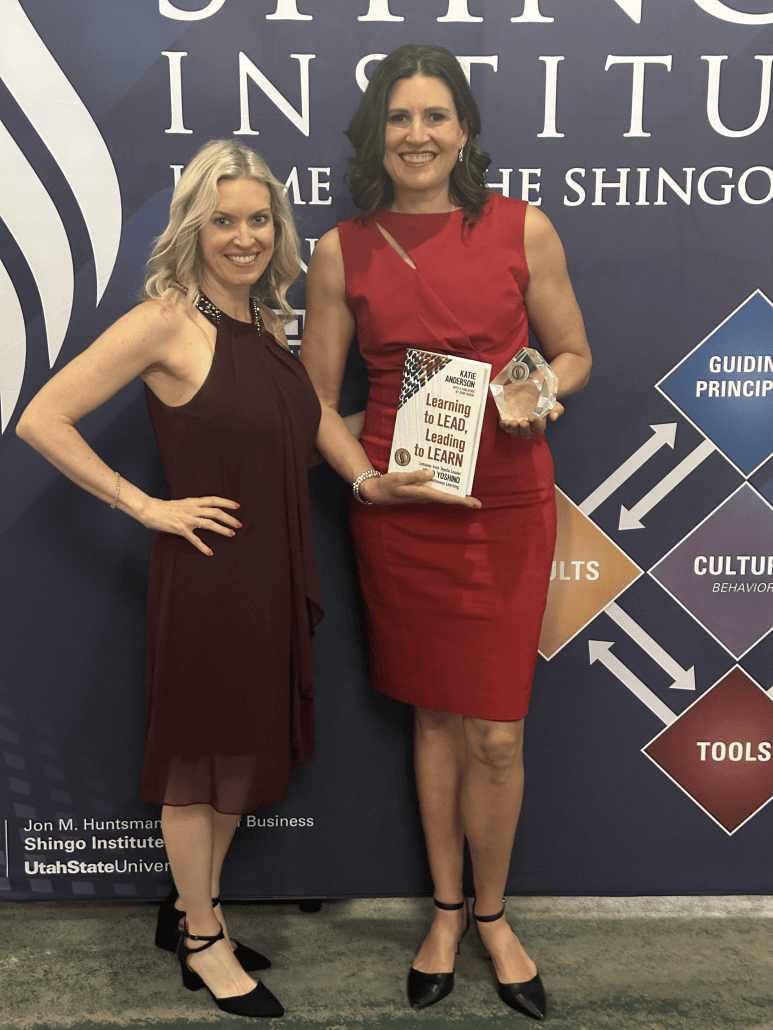 Reflect and Take Action
Reflect and Take Action
